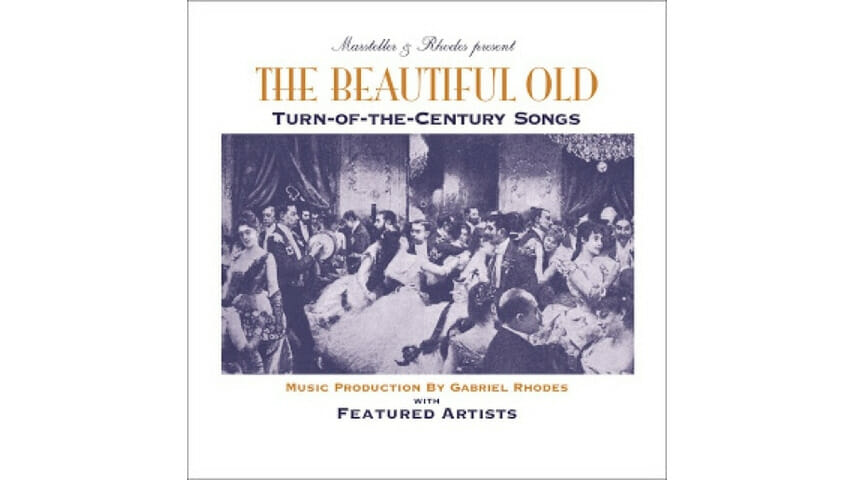Various Artists: The Beautiful Old

Born aloft by vigorous performances from Garth Hudson, Richard Thompson, Kimmie Rhodes and Dave Davies, The Beautiful Old is one of those grand ideas that truly had no business getting off the ground. Recruiting a scattered cast to record faithful, front parlor versions of songs from the sheet-music era? Yeah (condescending pause), good luck. Yet in defiance of logic, cynicism and geography, The Beautiful Old succeeds not only as a damn fine collection of music, but also stands as an enduring testament to overcoming the improbable.
The first barriers of skepticism are no minor obstacle. Scan the list of 100-200-year-old titles—ranging from familiar standards like “After The Ball” (1892) and “The Band Played On” (1895) to melodies last hummed during the Taft administration—and you’ll likely suppress a yawn, expecting a dusty snooze through sepia-toned, preservation-society pieces. Even more cringe-worthy, the collection has the latent potential for pure novelty kitsch. With guest vocalists varying from young Irish folk singer Heidi Talbot to Austin lifer Will Sexton to acoustic blues traveler Eric Bibb, it’s easy to envision quaint old tunes covered as an array of Pier 1 knockoffs.
Remarkably, The Beautiful Old coheres into something neither dull nor precious, assembling a melting pot of players who downplay their individual country, jazz, blues and bluegrass influences while never sacrificing an ounce of personality. Instead, emphasizing period-appropriate rhythms and instrumentation, the performers pinpoint the heartbreak, lust, loss and flirtatious play loaded within the original compositions. These songs were never meant to age as museum pieces; they were written to touch and to entertain (and to move hundreds of thousands of copies of sheet music).
Across the collection’s 19 tracks, the artists tap into that stirring emotion and populist appeal. Kimmie Rhodes enfolds “A Perfect Day” (1910) with the soothing lullaby sadness that cuts across generations of exhausted mothers; Dave Davies croons “After The Ball” in an Old Country croak that waltzes from Fool to Lear at the turn of a phrase; Jimmy LaFave, Floyd Domino and Richard Bowden bring nearly 200 years of barnstorming craftsmanship to “Long Time Ago” (1839), using voice, piano and violin to stretch the wistful ballad back and forth across the centuries.
*
“Did the Colonel give you this CD?” asks my four-year old, referring to the 82-year-old grandfather who traditionally saves her a seat at his elbow for mid-day screenings of black-and-white classics.
*
The original spark for The Beautiful Old began in an unlikely carrel: while researching a musical project set after the California Gold Rush, 61-year-old San Diego songwriter Paul Marsteller became enamored with the songs of the period. The pie-in-the-sky notion to record a collection of archival songs may have fizzled then and there, but Marsteller happened to be working in a long-distance partnership with a younger multi-instrumentalist, Gabriel Rhodes, whose stepfather (Joe Gracey) helped shape Austin City Limits and whose mother (Kimmie Rhodes) has released a dozen solo albums and recorded with such Texas royalty as Willie Nelson, Joe Ely and Townes Van Zandt. Even then, The Beautiful Old may have been confined to the Rhodes’ Lone Star connections, but Marsteller has a longer history in commercial real estate than popular music and knows a thing or two about the cold call.
Marsteller and Gabriel Rhodes made up a wish-list of guest performers. Then they wrote letters.